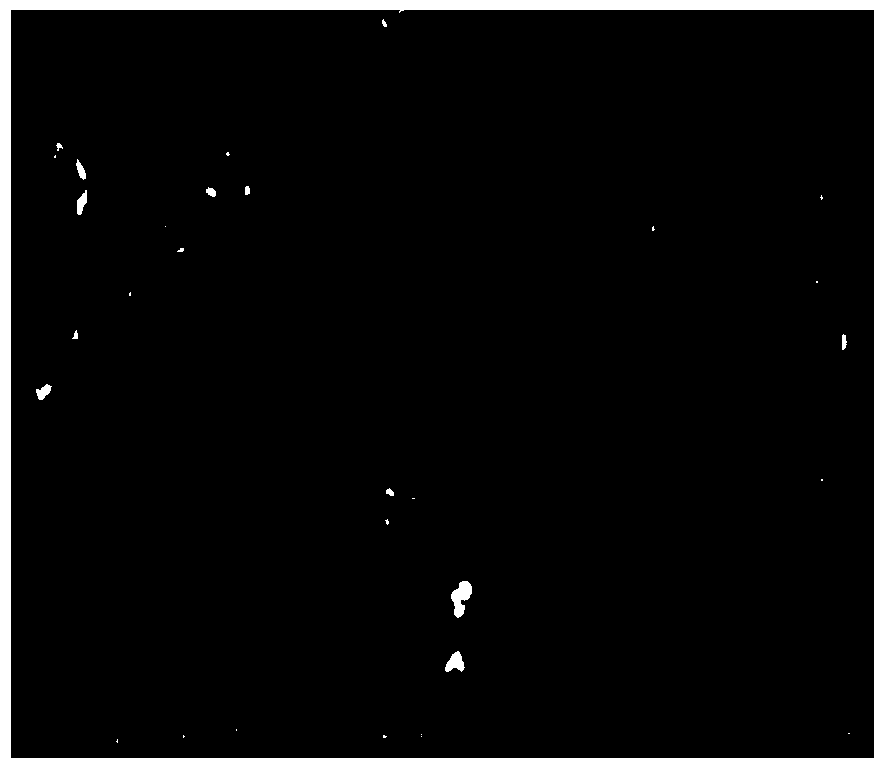Biosensor for organophosphorus pesticide rapid detection and detecting method thereof
A rapid technology for organophosphorus pesticides, applied in the direction of material electrochemical variables, etc., can solve the problems of unfavorable primary screening work, etc., and achieve the effects of narrowing the quantitative detection range, simple preparation, and small diffusion barriers
- Summary
- Abstract
- Description
- Claims
- Application Information
AI Technical Summary
Problems solved by technology
Method used
Image
Examples
Embodiment 1
[0053] Example 1: A method for preparing a glassy carbon electrode immobilized with poly-m-phenylenediamine tyrosinase (Tyr) and substrate (sodium 1,2-naphthoquinone-4-sulfonate)
[0054] A kind of preparation method of the glassy carbon electrode of immobilizing tyrosinase (Tyr) and substrate (1,2-naphthoquinone-4-sodium sulfonate) with poly-m-phenylenediamine is as follows:
[0055] a. Polish the glassy carbon electrode with a diameter of 2mm (used as a working electrode) with alumina polishing powder with a particle diameter of 1μm, 0.3μm and 0.05μm in sequence, and then use distilled water, ethanol, and distilled water to ultrasonically clean it for 3 minutes to clean it up after drying;
[0056] b. Drop-coat the newly prepared 10 μL 0.05mol / L sodium 1,2-naphthoquinone-4-sulfonate solution on the surface of the bare glassy carbon electrode obtained in step a, and let it dry naturally;
[0057] c. Drop-coat 10 μL of 20 mg / mL tyrosinase and 5 μL of 2.5 mg / mL glutaraldehyde ...
Embodiment 2
[0060] Example 2: A biosensor for rapid detection of organophosphorus pesticides
[0061] A biosensor for rapid detection of organophosphorus pesticides is called GC-NQS-Tyr-1,3-DAB biosensor. The sensor uses a saturated calomel electrode (SCE) as a reference electrode, and a platinum sheet electrode as a counter electrode. On the glassy carbon electrode that has tyrosinase (Tyr) and substrate (1,2-naphthoquinone-4-sodium sulfonate) immobilized with polym-phenylenediamine prepared in embodiment 1 as working electrode, this working electrode Tyrosinase (Tyr) and substrate (NQS) were electropolymerized and immobilized on the glassy carbon electrode with poly-m-phenylenediamine, a non-conductive polymer.
Embodiment 3
[0062] Embodiment 3: a kind of organophosphorus pesticide rapid detection method,
[0063] A rapid detection method for organophosphorus pesticides. In the method, the aforementioned biosensors for rapid detection of organophosphorus pesticides are put into phosphate buffer solution with pH=6.5, and chronoamperometry is used to scan with current-time method on an electrochemical workstation to study tyrosine The electrochemical behavior of the acidase glassy carbon electrode comprises the following steps:
[0064] First, measure the blank curve before adding organophosphorus pesticide, which is in 30mL0.05mol / L phosphate buffer (passed through O 2 15min) to scan and stabilize at E=+0.10V for 90s (at this time, the substrate 1,2-naphthoquinone-4-sulfonic acid sodium (NQS) becomes 1,2-naphthalenediol-4-sulfonic acid Sodium (H 2 NQS)); at E=-0.15V for 15s(H 2 NQS is converted to NQS); recovery 60s at E=+0.10V (NQS is converted to H 2 NQS);
[0065] After the blank curve is m...
PUM
 Login to View More
Login to View More Abstract
Description
Claims
Application Information
 Login to View More
Login to View More - R&D
- Intellectual Property
- Life Sciences
- Materials
- Tech Scout
- Unparalleled Data Quality
- Higher Quality Content
- 60% Fewer Hallucinations
Browse by: Latest US Patents, China's latest patents, Technical Efficacy Thesaurus, Application Domain, Technology Topic, Popular Technical Reports.
© 2025 PatSnap. All rights reserved.Legal|Privacy policy|Modern Slavery Act Transparency Statement|Sitemap|About US| Contact US: help@patsnap.com



